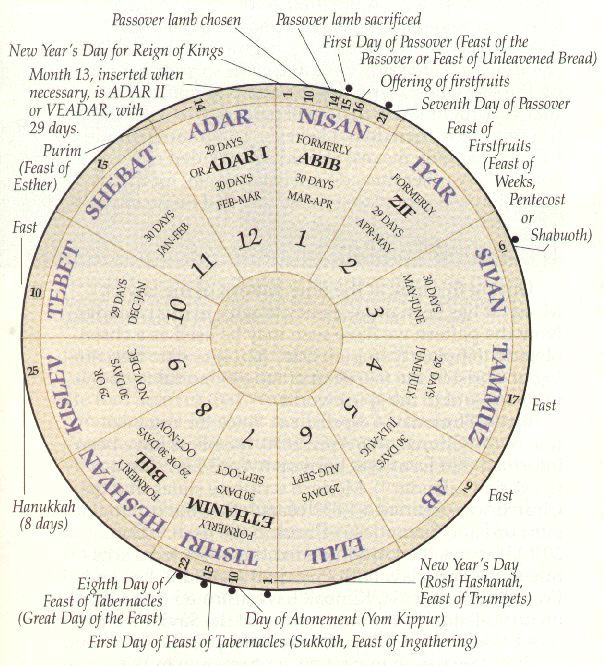
The Modern Hebrew Calendar. The lunar months all begin near a new moon, and an extra month is inserted seven times every nineteen years before Nisan to keep that month in the spring. Note that Nisan is numbered as the first month (Ex. 12:2) even though the civil year begins with the planting season in the fall (Lev. 25:3-22) on 1 Tishri. The original seven holy days of the law of Moses are indicated with black dots. This modern calendar is based entirely on calculations; the Judean calendar used at the time of Christ was based on actual observations of the thin crescent of the new moon to determine the beginning of the month. For some purposes years are reckoned from Nisan, but the official civil year begins on 1 Tishri.